
Total 58 Slate pieces, weighing approximately 70 tonnes, belonging to the precincts of the Hill Kasta and found in Lake kerkini, transferred to the Museum of Amphipolis.
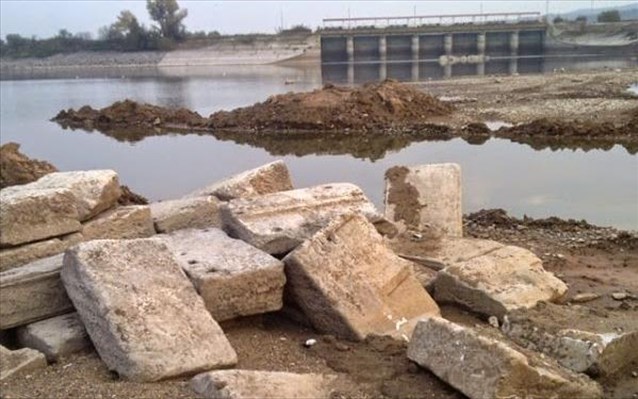
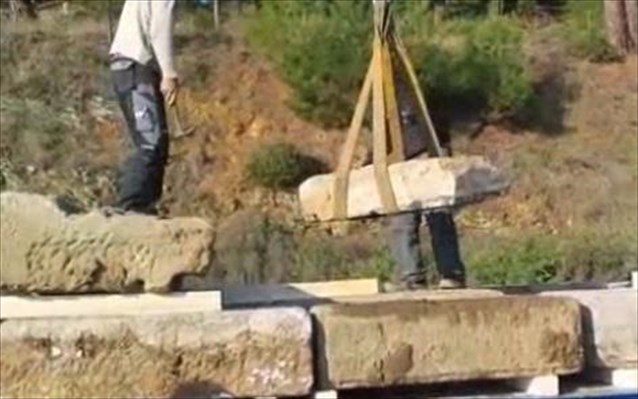
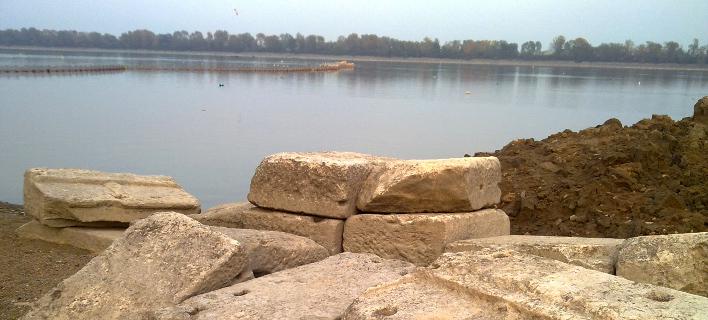


Source: iefimerida.gr

Total 58 Slate pieces, weighing approximately 70 tonnes, belonging to the precincts of the Hill Kasta and found in Lake kerkini, transferred to the Museum of Amphipolis.





Source: iefimerida.gr
youthful heart of flames always respect and admiration for his father Philip Ii, the one who created the unbeatable army of Macedon, the Phalanx and the Sarisses and changed the Macedonians from months in the most fearless frightened, andreioys and megalopsychoys and civilized at the same time soldiers of the world!

 This shows the excellent quality yard in Amphipolis, with the white Ornate marble Thassos, who indeed was also covered with magnificent art and decorating marble slabs with gutter slope!
This shows the excellent quality yard in Amphipolis, with the white Ornate marble Thassos, who indeed was also covered with magnificent art and decorating marble slabs with gutter slope!

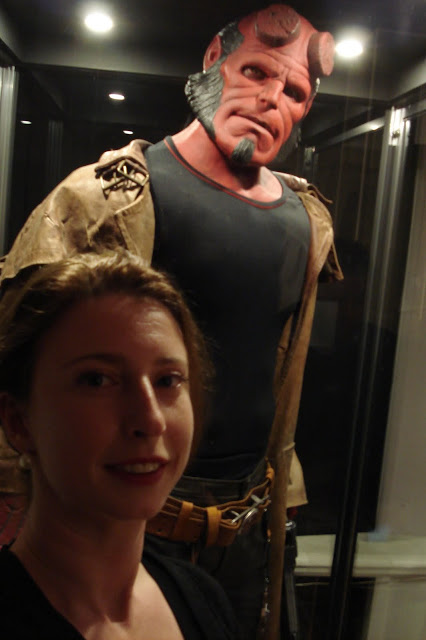
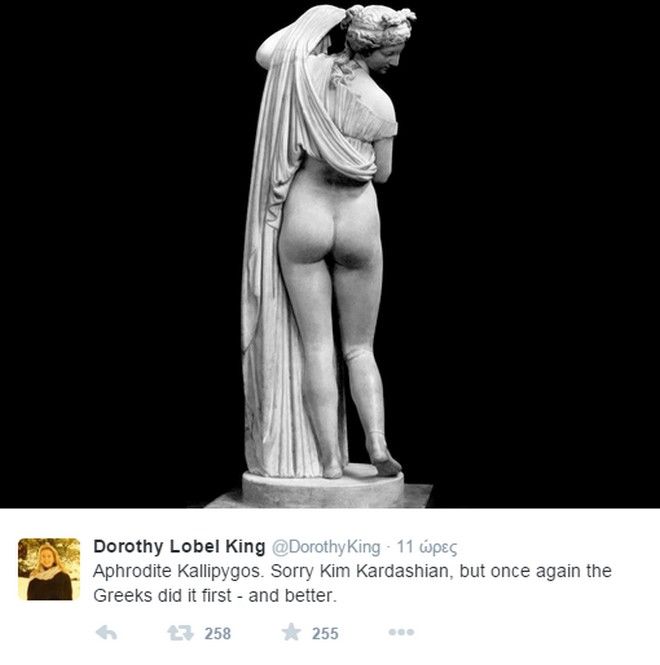

Source: iefimerida.gr
| The civil engineers have begun and complete their studies for the attachment of the monument, so it can be safely visited for a limited number of people |
 |
|
According to the Ministry of culture, daily crowds of people arrives in Hill Kasta in order to be able to see up close even the entrance to the notorious grave, as no one is allowed to go further, unless he is a member of the excavation team of archaeologists. Indeed, the Ministry argues that guests will need to be patient in order to get to the tomb and to see up close the Sphinxes, the caryatids, the mosaic and the burial chamber. However, civil engineers have begun and complete their studies for the attachment of the monument, so it is no longer sidirofrakto and can be visited with safety for a limited number of people. As you mention and the newspaper "TA NEA", indicative of the situation, prevailing from the growing together in the area of confluence of excavations is that Cafe, located near the Tomb no longer serves a variety of Italian coffee, while until recently he only Greek. Archaeologists give the baton to maintainers At the same time, the tomb of Amphipolis archaeologists give the baton to maintainers, as the cold and the winter rains threaten the findings, which should be protected. So, inside the Tomb have begun procedures to meet the sculptures, but the mosaic. |
 The Minister satisfied this report, but in essence it is a finding important, some hope that could possibly reveal the identity of the dead. The performances were detected in September, then that was meant for a short time alarm in the media that found inscriptions. It was these pieces of marble with faint figures that no one then knew what exactly is and what secret could testify.
The Minister satisfied this report, but in essence it is a finding important, some hope that could possibly reveal the identity of the dead. The performances were detected in September, then that was meant for a short time alarm in the media that found inscriptions. It was these pieces of marble with faint figures that no one then knew what exactly is and what secret could testify.
Answers will give the x-ray with the thermal imager and laser
In accordance with the apocalyptic story of Mary Adamopoulou today in ' News ', you are going to faint painted figures that with the help of technology we will be able to see more clearly. Detected over five marble fragments that were in the dust covering more then the mosaic with the abduction of Persephone.
Item zwoforoy
The human figures are bright red and yellow color and were transferred immediately to the Museum of Amphipolis to shelter, after any exposure to excessive light could erase these faint signs that will give new information about the monument. Their study so far has led to the conclusion that was placed over the marble uprights – constituted a kind of frieze.
It remains to be seen the sex of figoyrwn within this magnificent funerary monument that dominated women's styles. Here, answers will give the x-ray with the thermal imager and laser. This is technology that has been used in the past and the Citadel.
The question is whether these figures will give us and information about the identity of the dead. Speaking at the "new", the Professor of Classical Archaeology at the University of Athens Georgia kokkorou-alevras said: "It is very difficult… Usually the issues we encounter in Macedonian tombs are either mythological or banquet scenes or hunting scenes, considered among them pictured and the dead as a member of the Macedonian elite». Adds that it remains to be seen if this applies in the case of specific expressions.
iefimerida.gr
With the method of mapping and electricity of electrical resonance in the first phase, «aktinografithike» just one piece of the Hill, identified above and around the impressive funerary monument, which brought to light after an intensive excavation the excavation team last quarter of Katerina Peristeri.
The political leadership of the Ministry of culture and sport, with the active role of Minister Costas Tasoula and Lina Mendoni General Secretary and in collaboration with the Chief Archaeologist Katerina Peristeri, has already identified broadly the stages that will follow from here and beyond both the excavation project in Kasta Hill and around him, and in the study of funerary monument and of the findings of and concerning the study of anthropology material, i.e.. the human skeleton found nearly complete in the Tomb in the background of the third Chamber.
Within walking distance
The "Sunday" ethnos "newspaper" found in a short distance from the site of the excavation in Kasta Hill of Amphipolis and recorded with the photographic lens of all phases of work, After completing the month-long phase of excavation, that was the revelation of the funerary monument. In a portion of the Hill, directly over the last, configured the space in order to proceed with the investigation
Already in this section until the middle of the week and despite the heavy rain last Wednesday, completed the first phase of prospecting, that started a 10-day period. Inside 7 until 10 days from the day of commencement of the work scientists of the University will be able to have with the method of electrical electrical tomography mapping-tangible results, as was stated in "" ethnos "newspaper" Professor Gregory Tsokas.
Will follow in the first phase of excavation incisions without unquantifiable time since there is always the factor of weather conditions of winter. Based on these incisions will be scheduled from spring, as estimated, the new archaeological excavation. At the same time Professor Gregory Tsokas and colleagues at the Laboratory of applied Geophysics will "scan" and a large part of the remaining 17 Hill's acres.
Excavator performs earthworks in the tumulus Kasta.
To note that the past decades starting from the excavations of the late archaeologist Dimitris Lazaridis 50 years have found a number of tombs. The period from the 1971 until the 1985 excavated in Northern, the Western and the eastern part of the tomb-the Tomb brought to light by the k. Peristeri is situated on the South side- and asylitoi discovered Iron Age graves. Also the 1982 found 10 kibotioschimoi or lakkoeideis tombs of late archaic era, eight of whom were in the northern part of the mound and two in East.
In addition found edifice with dimensions 10×10 m., with 5 m. height, that from the d. Lazaridis was considered burial mark, though Katerina Peristeri, based on the findings of the overall claims that this is the Foundation of the pedestal on which was placed the sculpture of Lion of Amphipolis.
The drainage project is in full swing around the mound peritoichio, as the presence of the truck in the back.
Under the pressure of the oncoming winter on the hill there is external Kasta orgasm, as she recorded the "Sunday" ethnos "newspaper". Transferring soils with big trucks and the help of a backhoe, While the trench was formed after the discovery of large perimeter wall with a total length of close to 500 measures, that was revealed in previous years, becomes a big drainage project to protect the monument.
The work is done at the expense of the municipality of Amphipolis under the constant supervision of the Mayor Costas Melitoy, and civil engineer. He, Speaking at the "Sunday" ethnos "newspaper", He talked about a project urgency, they undertook to implement the municipal authority in consultation with the archaeologist k. Peristeri. "The water collected in the trench are many and can endanger even the perimeter wall of statics" as said and for this reason created a wide drainage network-without concrete- they will gather the waters of the trench at various points and channels at a distance 400 measures, as reported.
Concrete cylinders remain piled up to be placed at points selected by the municipality's engineers.
DIASKOPISI
The "eyes" of special underground
This method of geophysical prospecting in General provides for the… partially ground wiring and the power input to the Earth with the help of electrodes. Then becomes a measurement of potential difference and the distribution of resistance with a fairly complex and developed algorithm, they have devised by scientists of the laboratory of applied Geophysics and these elements help for 3D visualization of subsoil. The method of electrical resonance, Complementing this mapping of electric, has far greater penetration and in addition is able to visualize three-dimensional subsoil. OSO is the largest ancient architectural remains (e.g.. a massive Macedonian Tomb) in the subsoil, the better the results of imaging, as the notes G. Tsokas.
X SELECT TELIDIS
ethnos.gr
As I have said before it slightly worries me that people are overly associating me with Amphipolis, and I am happy to explain points, but … I will wait until Katerina Peristeri presents the amazing finds on the 29th, and she reveals Act One of the great Saga of Amphipolis.
Todays press release (here) added this information:
Σύμφωνα με τον Υπουργό Πολιτισμού, with the maintenance work uncovered the first suspected human representations in epistylia found in the third space. At the moment has become the first cleaning of epistyles and will follow and laser processing, and other procedures. “If you hurry up, you risk making errors that can be decisive”, the Minister emphasised, who wanted to say in this way that don't hide something, just the revelations made so slowly anyway and is not just a matter of someone new find, αλλά και η ίδια η διαδικασία της συντήρησης θα συνεχίσει να αποκαλύπτει πράγματα. “Αυτή είναι και η γοητεία της αρχαιολογίας”, reported
The description of the first human representations in friezes in the third room, and that they are being treated with lasers, suggests to me that they were painted. Similar painted figures were found inside the tomb of Hecatomnus, and unlike the sculptures these kinds of paintings can fade and vanish quickly if they are not treated correctly.
Also this paragraph suggest that I may have been correct in my assumption that filling the rooms with soil was partly to stop them collapsing:
Ο κύριος Τασούλας, θέλοντας να δείξει τις δυσκολίες που είχε να αντιμετωπίσει η ομάδα σε σχέση με τις στερεωτικές διαδικασίες, said: “The soil inside the Tomb, during the years, played a role fixative for the monument. The removal of soil affect the support, and ypostylwseis had to be done in such a way as to provide exactly the same support on the walls every time, neither more nor less.”
As I keep saying, the team at Amphipolis is one of the best in the world. In times of crisis, and Greece has been going through a horrible period, it is natural to doubt everyone in authority, but please do not doubt that Katerina Peristeri and Michaelis Lefantzis are doing an exceptional job at Amphipolis.
Source: phdiva

A mysterious royal tomb in Greece may hold a relative or associate of Alexander the Great, portrayed here in a mosaic from Pompeii.
Photograph by Araldo de Luca, Corbis
Published November 21, 2014
Suspense is rising as archaeologists sift for clues to the identity of the person buried with pomp and circumstance in the mysterious Amphipolis tomb in what is now northern Greece. The research team thinks the tomb was built for someone very close to Alexander the Great—his mother, Olympias; one of his wives, Roxane; one of his favorite generals; or possibly his childhood friend and lover, Hephaestion.
Over the past three months, archaeologist Katerina Peristeri and her team have made a series of tantalizing discoveries in the tomb, from columns sculpted masterfully in the shapes of young women to a mosaic floor depicting the abduction of the Greek goddess Persephone. The tomb's costly artwork all dates to the tumultuous time around the death of Alexander the Great, and points to the presence of an important person.
Alexander himself was almost certainly buried in Egypt. But the final resting places—and the rich historical and genetic data they may contain—of many of his family members are unknown. The excavation at Amphipolis is bound to add a new chapter to the history of Alexander the Great and his family, a dynasty as steeped in intrigue, conspiracy, and bloodshed as the fictional Lannisters in the popular television series Game of Thrones. Among Alexander's family, “the king or ruler who ended up dying in his bed was rare,” says Philip Freeman, a biographer of Alexander the Great and a classical historian at Luther College in Decorah, Iowa.
Palace Intrigues
To understand these palace intrigues, one must begin with Alexander's father, Philip II, who ascended the throne of ancient Macedonia in 359 B.C. At the time, Macedonia was a modest mountain realm north of ancient Greece, but Philip had big dreams. He transformed Macedonia's army from a band of ragtag fighters into a disciplined military machine, and he armed it with a deadly new weapon, the sarissa, a long lance designed to keep enemy troops from closing in on his phalanxes.
A natural-born conqueror, Philip led his army to the west, crushing and intimidating the major Greek city-states until all had surrendered to his rule. “Philip II was a traditional warrior king,” says Ian Worthington, author of By the Spear: Philip II, Alexander the Great, and the Rise and Fall of the Macedonian Empire. “He was always in the thick of battle.”
By custom, Macedonia's kings married multiple wives, often for the purposes of sealing political alliances with powerful neighbors. Alexander's mother, Olympias, was a daughter of the king of Molossia, a realm that encompassed part of modern Albania, and she claimed descent from the legendary Greek hero, Achilles. She was one of Philip's many wives, and according to ancient historians, she screamed relentlessly at court to put her son on the Macedonian throne. Some historians even suspect that she poisoned Alexander's older half-brother, impairing his mental faculties.
For a time, her intrigues seemed to succeed. Philip groomed the young Alexander as his heir, providing the boy with a first-class education from a renowned tutor, Aristotle, and encouraging his prowess as a warrior.
But important Macedonian nobles at Philip's court viewed Alexander as half foreign and possibly illegitimate. By the time Alexander reached his late teens, Philip seemed to share these doubts. He took a new Macedonian wife, and during a drinking party, Philip allowed Alexander's legitimacy to be publicly questioned. Then Philip drew his own sword on Alexander, a mortal insult.

Phillip later tried to patch things up, but he had created a dangerous enemy. Exactly what happened next is the subject of debate, although the bare facts are well known. In 336 B.C., Philip threw a lavish public wedding for one of his daughters and invited members of neighboring royal houses to attend this state occasion.
As part of the festivities, Philip planned to stage public games at daybreak in the theater at Aigai, his capital city. He strode into the stadium, wearing a white cloak over his shoulders. On one side was Alexander; on the other was his new son-in-law. Philip waved away his bodyguards, and as he stood at the center of the theater, the large crowd began to roar with approval.
“That was the last thing he ever heard,” says Worthington. An assassin stepped out from the crowd and stabbed Philip to death as the guests watched in disbelief. In the ensuing bedlam, the murderer, a man named Pausanias, bolted from the theater toward a spot where horses were tethered and waiting for him. But just as Pausanias was about to escape, he tripped and fell, and three of Philip's bodyguards speared him to death.
Conspiracy Theory
Did Pausanias act alone? Some ancient texts suggest that he did, assassinating Philip in a jealous rage. Many of the ancient Macedonian nobles were bisexual, and Philip was no exception. He had taken Pausanias as his lover, and when he tired of him, he discarded the young man and even allowed others to sexually abuse Pausanias. So Pausanias may have murdered Philip in an act of revenge.
But several clues point to a conspiracy, says Worthington. Pausanias, for example, fled to a spot where multiple horses were waiting, suggesting that several people had made plans for escaping the crime scene.
“I think Pausanias was manipulated to kill Philip,” says Worthington, who suspects that Olympias and Alexander played key parts in the assassination. Both mother and son had been deeply insulted by Philip. In addition, they may have feared that Philip's young Macedonian wife would produce a Macedonian heir more acceptable to the local nobility. The only way to prevent this would be to eliminate Philip. So Worthington theorizes that Olympias and Alexander poisoned Pausanias's mind and encouraged him to murder Philip.
Other classical historians aren't so sure Alexander was guilty of patricide. Nevertheless, says Luther College Freeman, “if you put Alexander on a couch today and tried to analyze him, you could have a lot of fun.”

The King Is Dead, Long Live the King
With Philip gone, Alexander had to convince the Macedonian court that he deserved to be king. He planned a costly funeral for his father, cremating the body on a massive funeral pyre and constructing an elaborate tomb for Philip on the outskirts of Aigai (the modern Greek town of Vergina), some 100 miles from Amphipolis. As Macedonia's aristocracy looked on, Alexander buried his father “like a Homeric hero,” says Ioannes Graekos, an archaeologist and curator at the Royal Tombs Museum in Vergina.
Inside the tomb, Alexander interred a gold chest containing Philip's skeletal remains, as well as a host of royal treasures, from a gilded crown to a golden scepter, a gold cuirass, and a gold- and ivory-adorned deathbed. Over the doorway, the young king had artists paint a hunting scene showing Alexander and his father closing in on a lion.

“Only royalty can hunt lions, so Alexander was honoring his father, but he was also honoring himself,” says Terence Clark, an archaeologist at the Canadian Museum of History in Gatineau, Quebec, who, along with National Geographic and others, is helping to organize a major new traveling exhibition on the heroes of ancient Greece, including Alexander the Great. “It's a definitive statement that Alexander is now in charge.”
But despite his appearance of confidence, Alexander still feared rivals at court. He ordered the deaths of his cousin Amyntas and of one of Philip's young wards. And his mother, Olympias, took care of enemies among the royal women. According to at least one ancient text, she forced Philip's young Macedonian wife to commit suicide and arranged for the murder of her rival's daughter. Olympias, says Elizabeth Carney, a classical historian at Clemson University in South Carolina and biographer of Alexander's mother, was “a political woman.”
That left just the army. Alexander had to convince Macedonia's generals and soldiers alike that he was a commander like his father. So he embarked on a series of military campaigns, quelling rebels in the Balkan region, crushing the city-state of Thebes, and leading his army to one victory after another. By the time he turned 21, Alexander was firmly in control of Macedonia and Greece, and ready to embark on the conquest of Persia.
Alexander extended his rule to lands as far south as Egypt and as far east as India, creating one of the greatest empires of the ancient world. His closest companion was his lover Hephaestion, a Macedonian general, and when Hephaestion finally succumbed to a mysterious ailment in 324 B.C. on an eastern campaign, Alexander was nearly undone by grief. According to the ancient writer Plutarch, he had Hephaestion's doctor crucified and massacred an entire tribe in the region to provide offerings for Hephaestion's spirit.

Things Fall Apart
By the time of his own death at age 33, Alexander was still in the east, planning the conquest of Arabia. He clearly preferred the thrill of battle to the numbing minutiae of governing. He had taken at least two foreign wives, but had produced no legitimate heir to his massive empire and had given little apparent thought to the matter of succession. Soon after he died of a mysterious fever in Babylon, his generals, nobles, and family members began fighting bitterly over the succession. In the end, his vast empire was divided as spoils of a civil war, and his entire direct line was wiped out.
Alexander's mother met her end at the hands of a ruthless Macedonian noble, Cassander. To clear the path to the Macedonian throne, Cassander took Olympias prisoner during a siege and executed her. Then, like Alexander himself, he set about eliminating other potential plotters. He imprisoned Alexander's most important foreign wife, Roxane, and his posthumous son, Alexander IV, at Amphipolis—and had them both secretly murdered in 311 B.C. With the dirty work done, Cassander ruled the kingdom of Macedonia until his death in 297 B.C.
Most archaeologists today are convinced, based on historical accounts, that Alexander himself was buried somewhere in Egypt, quite possibly in the city that bears his name today, Alexandria. But researchers have yet to find the tombs of Olympias, Roxane, Hephaestion, and many of his generals. Perhaps the archaeological team clearing the mysterious tomb at Amphipolis will yet find the remains of one of them.
Any sane man, We are advised that in order to get to the desired destination- If we are not sure of the path- You should use, Compass or ...a GPS or even step-by-step instructions of some note. Otherwise we risk to saunter aimlessly and long-term, with an outcome.
But what could be the tools to fulfill the common for all people desire that is none other than to lead to happiness; The great Greek philosophers gave, a wide range of responses and provided all the tools, Depending on the approach each of them, the major question "what is happiness and how it is accomplished".
Concepts such as knowledge and self-knowledge, self-improvement, moral virtue, kindness and good behavior, harmony, acceptance of the natural order of things, freedom and self-control, formed part of their own answers to the big question that we are all to ourselves.
Philosophers like Epictetus, Epicurus and Aristotle we have provided all the tools for the fulfilment of our purpose and our nature has endowed with logic. The extant works of great philosophers, everyone of us can find a road map to happiness.
The survival guide of Epictetus (Manual)
The Acquired (55MX-135mCh) It could could be the "father" of instructions used widely in programmes of 12 steps: "Oh God give me the strength to change what I can, the patience to bear what I, and the wisdom to know the difference between them ".
"Set yourself a character and a lifestyle that would keep either you're on your own or with others". The philosopher urges humans to understand the difference between things that can dominate and what fails. Once you realize that a series of situations beyond his control, you have to educate the mind and not spent on them, but to accept the natural order of things.
Moreover the Epictetus believed passionately that our thoughts are completely dependent on us and the reflections are a kind of practical advice on how you should treat anybody suffering. One of the most well known indeed "students" of, It seems that he was the parasimoforimenos with Medal of Valor, American pilot, James Stoknteil. As has revealed, managed to survive physically and spiritually of the four-year captivity in Viet Nam v. applying the teachings of Epictetus.
"Nobody can be free, If it is not master of himself ".
"Take care to punish your defects, not timwreisai of them».
"People are dismayed not by what happens but by their view of what is happening".
Essentially, the late stoic "imposes" philosophy in psychology, advising those who tested negative emotions in difficult situations: "Filosofise the!”. A tip that managed to survive in Greece thousands of years ...
In this context is achieved when the Acquired serenity and equanimity of the soul which for him was a prerequisites virtue and happiness while the self-improvement and self-knowledge are an important part of the philosophy of.
The Garden of Epicurus (Complete Works- collection of saved clips of books of and about the nature of things of the Roman philosopher and poet Loykritioy)
Epicurus (341eg-270p. x.) has been described as the "philosopher of pleasure" mainly because of the dissemination of rumours from contemporaries on the famous Garden with Orgies?, where it housed the school of. Hence the current corrupt use of the designation "epicurean".
“It is impossible to live pleasantly without living wisely, honestly and fairly and it is impossible to live wisely, honourably and justly without living pleasantly”.
But the philosopher actually focused on mental-spiritual pleasure which leads to the ultimate goal: happiness. Just in contrast with other philosophers are not completely rejecting material possessions. The perceived happiness as an inexhaustible "chapter" spent only in moments of happinesses, After the contemplation of these recommended treatment for difficult or painful moments that will come. Even the most eminent "fans" were the u.s. President, Thomas Jefferson who in his personal letter characterizes himself "epicurean", but in the true sense of the term.
In pursuit of happiness proposed a simple lifestyle, that is distinguished by its kindness to fellow man while necessary components are friendship, freedom and thought.
"We need to find what we will eat and drink, before you find out what you will eat and drink».
"Once we exist, There is no way to yparxoyme a couple of times and I probably won't ever again yparxoyme. And you that you govern no tomorrow, off till the joy. And life wasted with the postponements and everyone dies busy».
"If you want to make someone rich, do not add money, to remove wishes».
For friends argued that what it offers the wisdom, for happiness of life altogether, the most important is the acquisition of friends and without them even the richest man could not be eytychisei. Clung to the ideal of individual freedom and the Garden was not only one commune of the era in which he lived with his students, with an unassuming manner, without many goods but freed from the "shackles" forms of work that do not meet.
Finally the thought was for him the ultimate cure for a series of aggravating emotions while the meditation, singly or in the form of a dialogue with friends was the Assistant, the recommended method for understanding of each problem and the release of the "shackles" of.
The ' Bliss ' of AristotStates (Ethical Nikomacheia, Ethical Eydimeia, Major Ethical, Political)
Aristotle (384eg-322p. x.) urged to search the happiness although the word he used was "Bliss" and exceeds the specific emotions or feelings experienced man at specific moments. That is why the word often translated as "thriving" or "prosperity".
“Bliss is a pleasant mental state resulting from the activity of the soul, If this activity is consistent with the perfect virtue”
As to the nature of the visa, appreciate that each person has a specific function but also a purpose while for everyone there is a specific model of life that best fits the nature of the.
As favored, We have to put ourselves in a process of self-improvement but should not focus only on an individual level as happiness is achieved through interaction in the context of a well organised system. For’ This and the reflections of the Bliss should not interpret cut off from its positions in society, the State and public life.
The correct behavior, They also employ Aristotle and encourages the development of good standards of behaviour but also in cultivating the right emotions at the right time. The moral virtue has a central role in his philosophy and he himself was a fan of "kleovoulos manual track measure».
"Happiness is the meaning and purpose of life»
«K amia ethics does not have innate, given by nature, but formed in humans with the habit, by repeating such behaviour».
"Virtue of man can be repeated good habit with which man becomes benevolent, virtuous».
"Not since all the EV, But meanwhile EV too».
But particularly focuses on use of logic, as an extra tool that leads to happiness which ultimately for him is nothing more than the sum of our achievements, but always with a significant role in the luck factor.
Source: archaia-ellada
By continuing to use the site, you agree to the use of cookies. more information
The cookie settings on this website are set to "allow cookies" to give you the best browsing experience possible. If you continue to use this website without changing your cookie settings or you click "Accept" below then you are consenting to this.